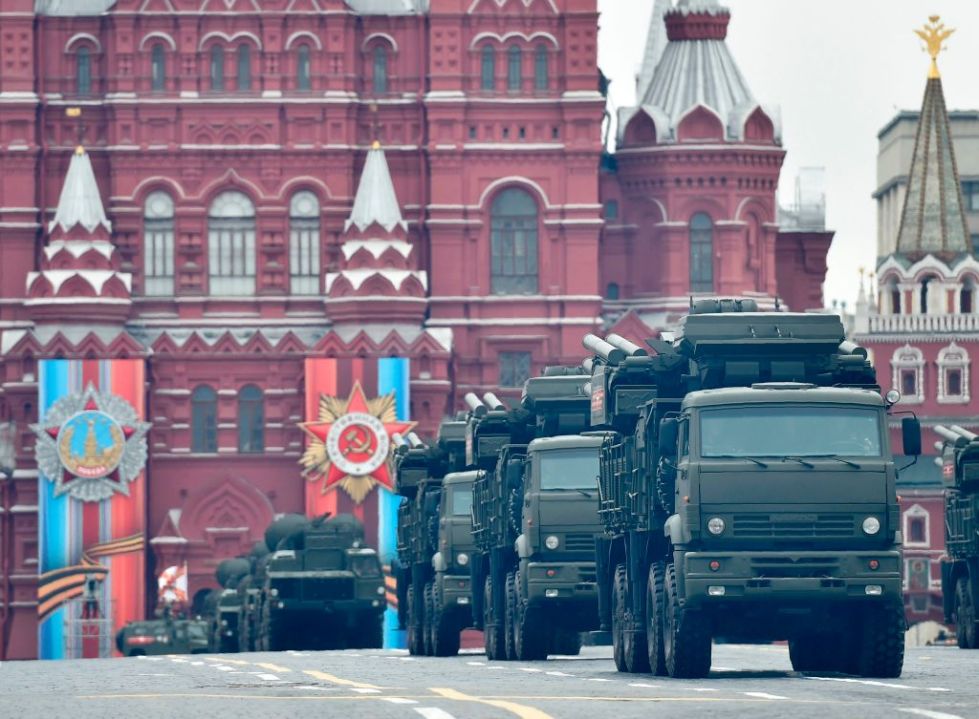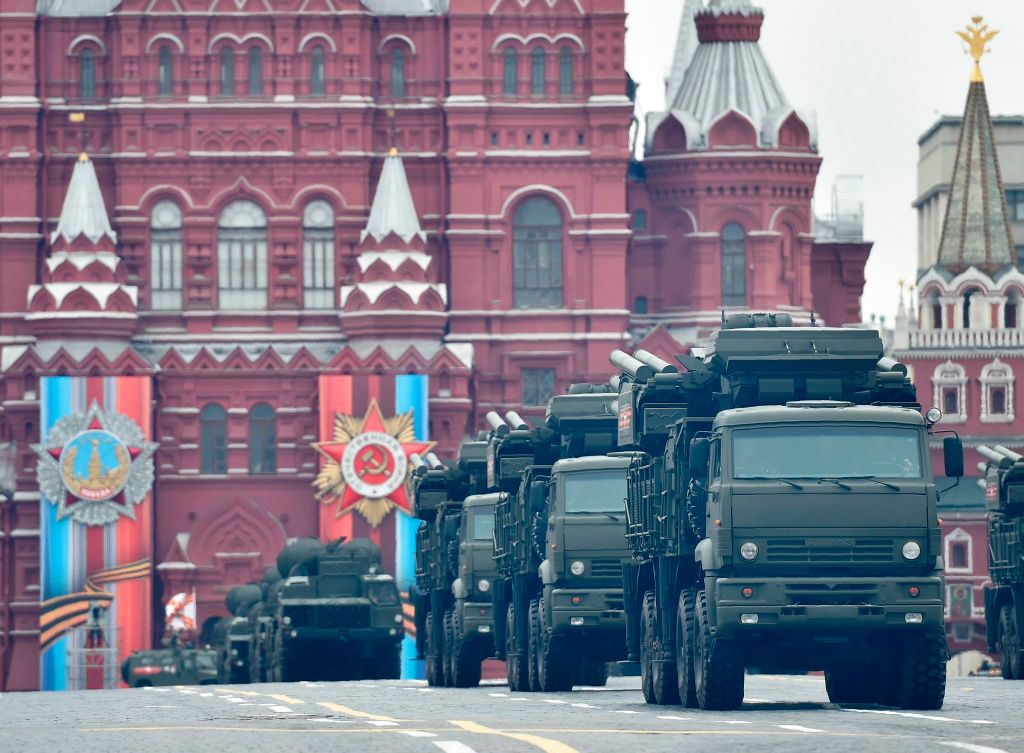There was nothing subtle about it, as cranes lifted truck-based Pantsir-S1 air defence systems onto the roofs of the sprawling Defence Ministry building on Frunzenskaya Embankment and another structure in the Taganka neighbourhood, south-east of the Kremlin. As a former president and the Patriarch of the Russian Orthodox Church both warned of the risks of Armageddon, one would be tempted to assume that Vladimir Putin was deeply rattled. Yet much of this is more performative than anything else.
This is all part of the new phase of the Kremlin’s effort to sell the war to a sceptical or disengaged Russian people
The Pantsir is a short-to-medium range gun-and-missile point air defence system that can handle targets from drones to cruise missiles, and which has shown its value in Syria. However, so far the Ukrainians have not demonstrated the capacity to attack anywhere near Moscow, so at first glance this seems a serious excess of caution.
Quite why these air defence systems are being installed in Moscow now, we have not been told. The Kremlin spokesman punted it to the Defence Ministry, and as of writing, they’ve not said anything. Instead, the commentariat is having a field day. Pro-war journalist Alexander Kots has said that is proves that the Kremlin ‘understands that strikes against Moscow and the regions are just a question of time,’ while other ‘milbloggers’ have welcomed it as evidence that the high command is getting serious about territorial security.
Nonetheless, what is striking is that this comes at a time when a range of more official commentators are talking up the risks to Russia – and, indeed, the world.
For example, former president Dmitri Medvedev, once regarded as a liberal but of late known more for his increasingly-unhinged social media posts, warned that ‘the defeat of a nuclear power in a conventional war can provoke the beginning of a nuclear war.’
Medvedev has become something of a laughing stock for his desperate attempts to reinvent himself as a hawk, but the same message was hammered home by Patriarch Kirill of the Russian Orthodox Church, who used his Epiphany address to allude to ‘great threats to the world, to our country, and to the entire humankind’. Not least the way ‘the desire to defeat Russia today has taken very dangerous forms. We pray to the Lord that he will bring the madmen to reason and help them understand that any desire to destroy Russia will mean the end of the world.’
Are Putin’s people really suddenly worried? About an imminent strike on Moscow, a catastrophic military defeat, an apocalyptic nuclear exchange? Not really. There is, of course, an uncomfortable awareness that the war has not gone to plan, but also a certain confidence that with 150,000 fresh troops ready to be unleashed, and Ukraine’s war effort heavily dependent on pretty much open-ended western support, that the war is by no means lost.
Rather, this is all part of the new phase of the Kremlin’s effort to sell the war to a sceptical or disengaged Russian people, one effectively launched by Putin’s sombre and bellicose New Year’s Eve address. He is, in effect, reframing the conflict as a modern counterpart to the Great Patriotic War, let’s call it the New Patriotic War.
The Great Patriotic War, the eastern front during the second world war, is the closest thing there is to a common and unifying national myth in Russia these days, and it is increasingly (and inaccurately) framed in terms of a beleaguered Russia standing alone against the night. For Putin to be able to try and invoke this to rally his people and get them to embrace isolation and accept the price in blood and treasure, he needs a sense of jeopardy.
Hence the Pantsirs in the skies, and the fire and brimstone on TV and social media. Like all dictators, Putin needs some fear to mobilise the masses. This may not be enough, though. When a relatively unknown ex-KGB man was being groomed for the presidency in 1999, bombs mysteriously ripped through four apartment blocks, killing more than 300. The ensuing panic helped make the case as to why Russia needed a tough ex-spook in charge, and Putin clinched the election with more than 53 per cent of the vote in the first round. If eschatological rhetoric and theatrical military deployments are not enough, what will he turn to next?








Comments